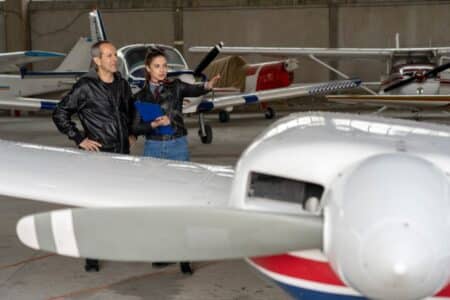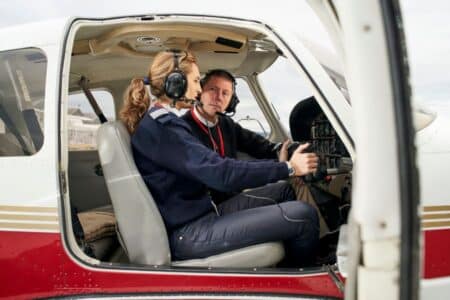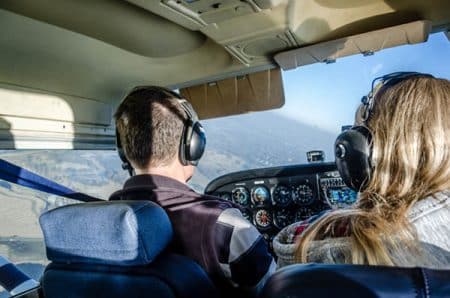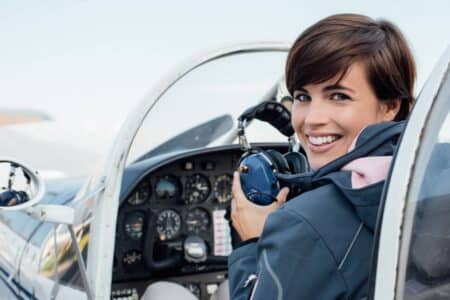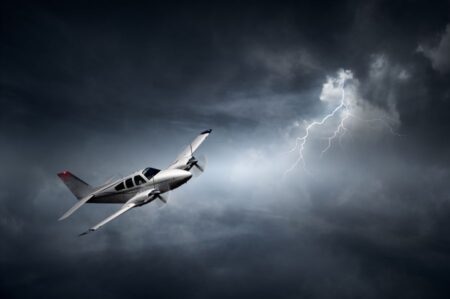What licenses do I need? How long does it take? How much does it cost? We often get asked how to become an airline pilot, so this article gives in-depth answers to your common questions.
We recommend you consider a trial flight or PPL (private pilot lesson) to see if you’d like to begin your journey with us.
Why train to be an airline pilot?
If you’re reading this, chances are you have a compelling reason—realising a deep-seated dream, perhaps. This is often sufficient motivation for many. But if you seek more reasons, consider the following. Diverse flight schedules offer an exhilarating yet challenging lifestyle. You’ll find yourself in numerous different locales, experiencing the world from an entirely new vantage point and interacting with many individuals who share your fervour for the job, crafting an unparalleled and remarkable work environment.
Before plunging into the colossal undertaking of pilot training, reflect on your ultimate objectives and customize your journey to align with them. This guide is primarily intended for those contemplating a career in airline flying, although some aspects may apply to other commercial flying areas.
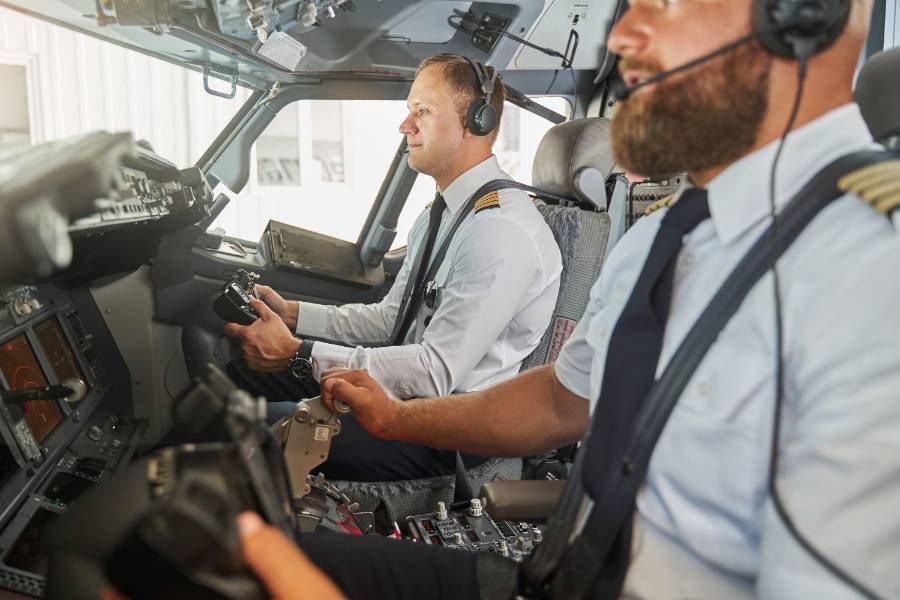
What are the prerequisites before embarking on this journey?
Invest in thorough research. You’ll soon discover that the journey to the cockpit is long and complex, presenting an array of routes with no standard storyline.
If you’re too young to initiate training, think about joining the Air Training Corps or Combined Cadet Forces – and if the university is on your agenda, joining the University Air Squadron could be beneficial. All these experiences will aid in determining if a career as a pilot suits you, and they’ll provide an advantage during the selection phase and in the competition for airline jobs.
Selection for Authorized Training Organizations (ATOs) does not necessitate a degree. However, having one could be advantageous, and some airlines may view it favourably.
A degree implies entering the profession at a slightly older age with additional experience. Moreover, the skills acquired during your degree studies could facilitate a career shift if you cannot continue pursuing a flying career.
Degrees related to aviation are gaining popularity, especially since they could grant student pilots access to government student loans, potentially up to £40,000. If you’re mulling over full-time training, remember that it’s a professional course, and the typical ‘university partying’ lifestyle won’t be part of the package.
Consider attending one of the Pilot Careers Live events, exploring flight schools, conversing with as many industry insiders as possible, and critically assessing the marketing pitches you come across.
Your training provider is a pivotal choice in your aviation journey. Before committing, visit the school, and interact with the current instructors and students. Will it offer the experience you’re seeking?
Are the resources trustworthy? Is the training recognizable and accepted by the potential employers you’re aiming for? Remember, it likely is if something appears too good to be true.
Every training provider will advise you to take a trial flying lesson before you begin. This memorable experience should confirm your enjoyment and basic aptitude for operating an aircraft.
Secure a Class 1 Medical certification. If you are unable to pass, it will be a significant roadblock. Although this is a comprehensive medical exam, it’s not as stringent as some might think. Wearing glasses is permissible if your vision can be corrected within a broad range. All medical evaluations must be conducted by a UK CAA-approved Aeromedical Centre (AeMC) and can take up to four hours. The examination includes reviewing your medical history, eyesight, a general physical check, hearing, heart rhythm, lung function, and blood and urine tests.
Medical fitness will become a cornerstone of your flying career, and your profession demands that you pass annual tests, with their frequency increasing as you age.
Maintaining a healthy lifestyle and devising a contingency plan in case of losing your medical clearance should be part of your considerations.
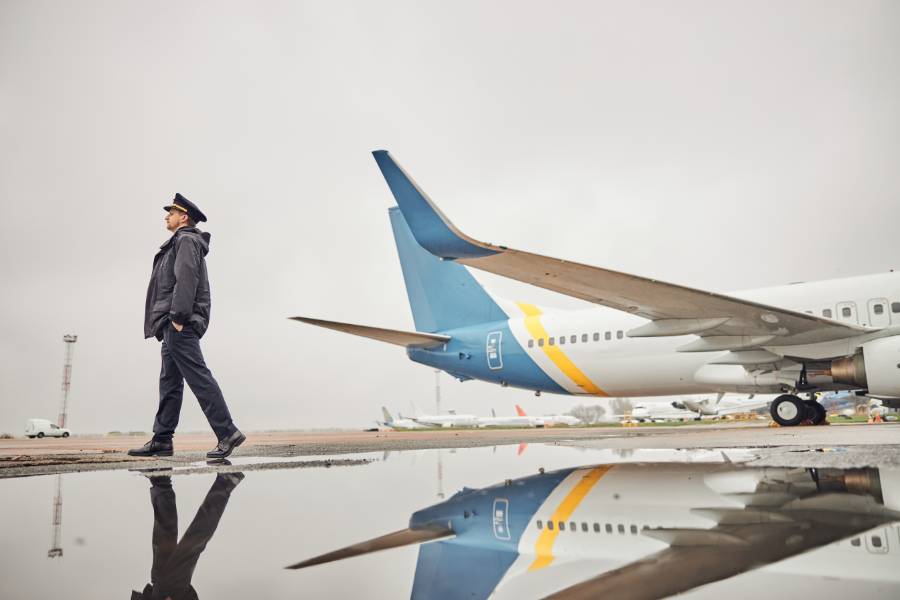
What kind of licence do I require?
To occupy the right-hand seat of a commercial airliner, you’ll need an Air Transport Pilot Licence (ATPL) or a Multi-Pilot Licence (MPL). A Commercial Pilot’s Licence with a Multi-engine Instrument Rating may suffice for smaller operations.
Initially, an Air Transport Pilot’s Licence is ‘frozen’ and permits you to serve as a co-pilot in commercial operations. Upon reaching 1,500 hours, it becomes ‘unfrozen’, legally authorising you to command an aircraft. However, in practice, this would be subject to an airline promoting you to the rank of captain. An MPL offers similar benefits, although it’s limited as the training is customised towards a specific airline, and the MPL may not be utilised with any other airline than the one it’s associated with – a ‘generic’ MPL does not exist. After 1,500 hours, it becomes an unfrozen ATPL.
A CPL might be adequate for other commercial aviation roles, such as instruction, surveying, or parachute dropping. It’s worth noting that there’s a broad spectrum of aviation careers beyond flying airliners, a distinct lifestyle. During the selection process, your motivation will be examined, so demonstrating thorough research into the career field will be beneficial.
How do I obtain these licences?
Before commencing your training, you must determine which licence you aim for, as it impacts your training method. Two main types of training are on offer, integrated and modular. For the ATPL, integrated and modular paths follow the same syllabus of exams and practical flying, although the modular route necessitates more hours. The modular route can be customised to the cadet’s timeline, allowing course elements to be interspersed with jobs or other life commitments. The integrated route requires fewer minimum hours as it adheres to a full-time, ‘zero-to-hero’ style of training that’s often residential and can be accomplished within one to two years.
The MPL is exclusively available for airline-affiliated courses, and you’ll need to pass the selection for an airline’s own MPL scheme before gaining acceptance. Only integrated-style training is available for MPL schemes. These tend to be highly competitive, with the number of applicants surpassing the available slots so that multiple selection attempts may be needed.
Each licence type has its pros and cons. As mentioned, an MPL is constrained for use at a single airline before acquiring 1,500 hours, so losing your job before reaching that milestone could put you in a difficult situation. An ATPL is less competitive to secure, although all integrated courses generally necessitate selection. Deciding which route suits you best will be crucial to your research.
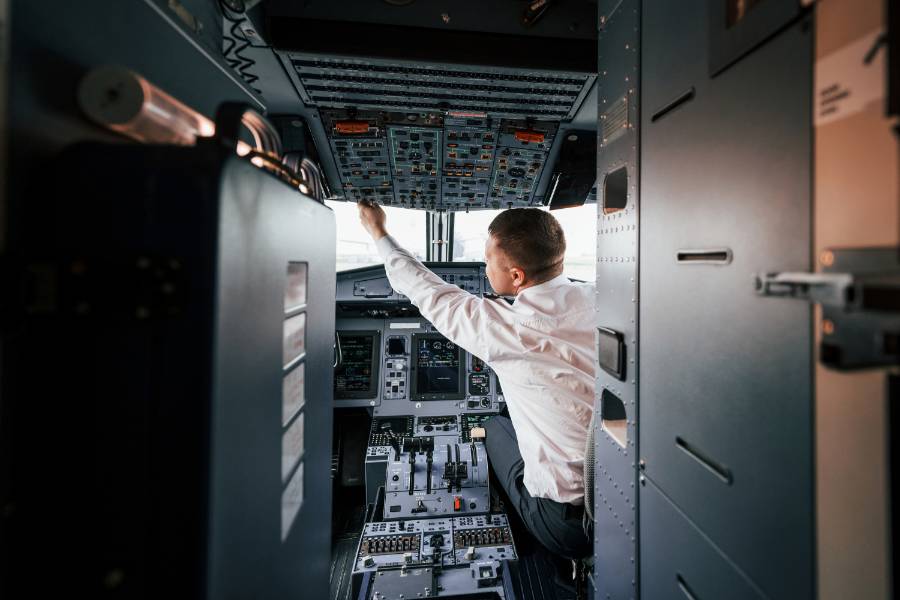
Integrated or Modular Training?
Choosing between an integrated or modular training approach is a subjective decision. An integrated course holds the benefit of usually being quicker than a modular one as it’s full-time, demands fewer hours, and is designed to offer a high level of consistency in training – crucial for quickly acquiring skills.
These courses are generally residential, often involving phases of training at overseas bases, and you’ll spend a significant amount of time with your peers, which fosters a supportive learning environment.
Historically, airlines have preferred integrated courses, but this bias is gradually diminishing as airlines shift their selection criteria. A modular course offers flexibility in terms of timeline and can be tailored to the candidate’s needs, with total course costs usually coming out cheaper than integrated ones. Both courses require dedication and focus, but the modular course demands a higher level of organisational skills from the trainee to coordinate the various components of the course. The 14 ATPL exams in a modular course are generally taken remotely and at home, necessitating substantial discipline and organisational skills. Some full-time residential courses are available to modular students for ground school.
How Much Will It Cost and How Do I Fund It?
The typical costs for courses up to obtaining a licence will range from £60k to £100k, excluding living expenses.
Scholarships are accessible for modular training, such as ground school and a Private Pilot’s Licence. It’s rare for airline programmes to cover the cost of training for candidates accepted onto their schemes.
Commonly, airline ‘schemes’ offer a ‘sponsored’ ATPL or MPL, where sponsorship implies provisional job offers upon training completion, while the cadet bears the cost of training. Bank loans are less readily available than in the past, leading many trainees to seek private loans from ‘the bank of Mum and Dad….’
The total cost of your pilot journey will also encompass the price of a Type Rating, an aircraft-specific course undertaken upon securing an airline job. This cost fluctuates between around £15k to £40k, and each employer will offer a different ‘deal’. Typical arrangements bond the pilot for the type rating cost, a bond that reduces with service or disappears after a certain period. Some may require upfront payment by the trainee.
Professional flight training represents one of your most significant financial investments. Regardless of the path you choose, ensure your investment is secure by considering these steps:
Conduct thorough research on your chosen Approved Training Organisation (ATO). What is its operational history? Has it experienced financial difficulties? Does it maintain connections with major airlines? While most ATOs function on a robust financial foundation, there have unfortunately been instances where an ATO goes bankrupt, sometimes taking their students’ funds along with them.
Opt for paying module-by-module instead of all up-front. Even integrated courses offer a pre-designated schedule to make payments in instalments over your training period.
Does your selected ATO offer a payment protection programme? These schemes promise to refund a percentage of your fees should you fail to achieve the required standard.
What Does Pilot Selection Look Like?
Pilot selection and assessments will be integral to your training career, both before and after training. The process assesses your interpersonal and technical skills, personality, and career motivation. Aptitude tests typically evaluate your skills by measuring reactions, hand-eye coordination, and other flying-related reflexes.
Mathematical tests often feature prominently, assessing your ability to perform mental arithmetic quickly and accurately.
Personality tests are becoming increasingly popular. It’s possible to prepare somewhat by familiarising yourself with the test formats. Guidance can be obtained from training schools.
Your skills are evaluated through interviews and group exercises to measure your leadership and teamwork abilities, key aspects affecting your work within an airline crew.
Interviews probe your strengths and weaknesses and the accomplishments and challenges you’ve encountered thus far. Your motivation for the job and industry knowledge are also assessed.
What Is The Training?
Training is divided into specific sections, usually structured as follows:
- ATPL Ground Exams: You must pass 14 exams encompassing navigation, flight planning, aviation law, and human factors. Full-time courses, whether modular or integrated, typically require six to nine months and involve a demanding classroom and independent study schedule.
- Flight Training: Practical flight training can be divided into sections on single and multi-engine piston aircraft. Due to the need for favourable weather in early flying training sections, ATOs often send you abroad to complete some sections.
- Night Rating: This includes both solo and instructional flights.
Commercial Pilot Licence (CPL): The CPL is a fundamental flight requirement for financial gain. It’s a significant milestone that requires a minimum of 150 hours of flight time, flying complex aircraft with retractable undercarriage and variable-pitch propellers. - Multi-engine Rating: This involves learning to fly a twin-engine aircraft and managing when one engine fails.
- Instrument Rating: This allows flying solely regarding the plane’s instruments. These crucial skills enable a pilot to navigate through clouds and adverse weather, forming the foundation of airline flying.
Multi-Crew Co-operation: This involves learning to work as part of a team, a requirement for most professional pilots.
How Do I Get an Airline Job?
Upon graduation, if you haven’t already been selected for an airline, you’ll be looking for opportunities. Some training schools offer dedicated career services to help you prepare CVs, prepare for interviews and simulator assessments, and may have dedicated ‘pools’ from which specific airlines recruit.
Proactivity is essential on your part as a graduate. If there’s a prolonged period between graduation and securing a job, you may need to undergo refresher training to maintain the currency of your qualifications, such as an Instrument Rating. This would represent an additional cost.
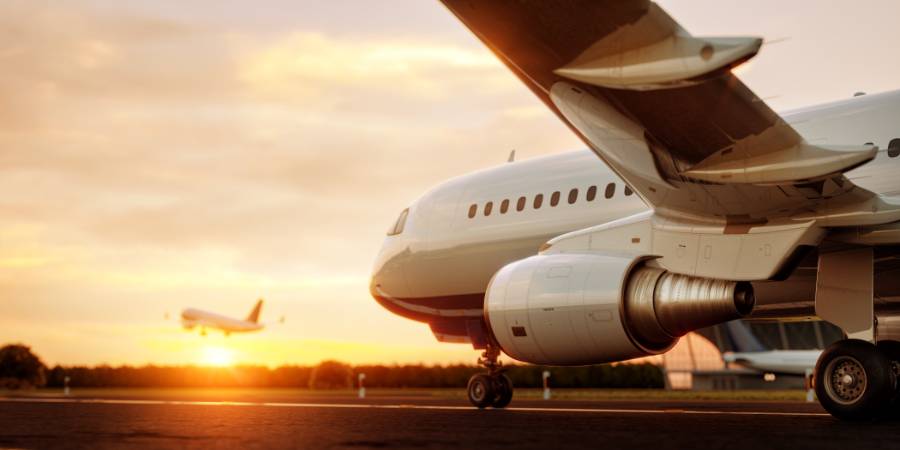
How Will My Airline Pilot Career Progress as a Pilot?
After completing your Type Rating, you’ll start line training, which involves operating commercial flights alongside a training captain.
Once you’ve passed this phase, you’ll qualify as a First Officer, from where you’ll work towards advancing your career. This typically involves becoming a Captain and transitioning to the left-hand seat on the flight deck.
Several other opportunities, such as training and management roles, can form part of your career. Short-haul and long-haul flying offer differing lifestyles and career progression rates.
What Next?
- Participate in Pilot Careers Live events held throughout the year in the UK and other European locations. You can meet leading ATOs, future employers, and universities offering relevant aviation degrees here. They will happily answer your questions about professional pilot training and careers. The events also feature presentations from major airlines and trainers. For more information, visit pilotcareernews.com/live.
Visit www.flying-start.org for more comprehensive information about a range of professional pilot careers (including alternatives to airline flying) and available scholarships.
Also, consider visiting www.pilotcareernews.com. There, you’ll find numerous articles on types of training and funding, along with interviews about individuals’ training journeys.
